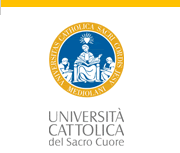Topic and Lecturer
The topic chosen for the 2017 school is
Modeling Spatial and Spatio-temporal Data with Environmental Applications.
The lecturer is: Prof. Bruno Sansó, University of California at Santa Cruz, USA. He will be assisted by Dr. Annalisa Cadonna (Vienna University of Economics and Business) for the practical sessions.
Course Outline
This course is intended for students that have a background in statistical methods and modeling. The course is focused on models for data that are spatially referenced and that evolve in time. We will develop models for stochastic processes that are indexed at irregularly scattered, fixed, locations. We will look into the theoretical properties of those models as well as into the computational issues involved in the estimation of their parameters. We will extend the analysis of fields of spatial observations that are collected in time. In particular, we will consider dynamically varying process where space and time interact. Real-data applications of Bayesian methods with MCMC techniques will be illustrated.
- Day 1: Introduction to Bayesian methods and hierarchical models. Examples of spatially referenced data. Basic properties of Gaussian random fields. Graphical exploration of spatial fields.
- Day 2: Variograms. Examples of families of correlations functions. Bayesian approach to estimation and prediction of spatial random fields.
- Day 3: The big data problem: reduced rank models and other modern approaches to dimension reduction.
- Day 4: Spatio-temporal models. Dynamic linear models: integro-differential equations.
- Day 5: Extensions



